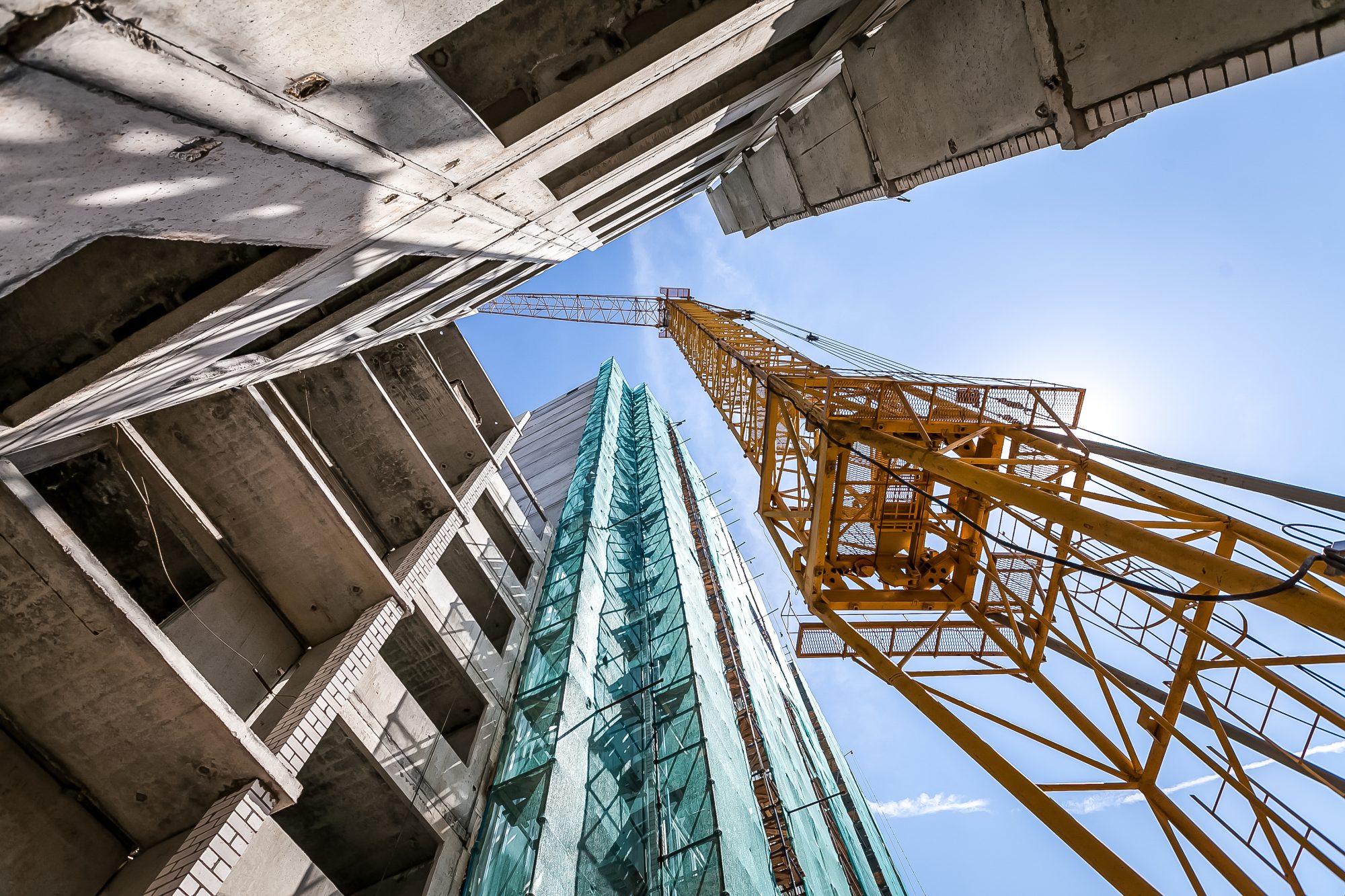With an area equivalent to the size of Paris built every week, and global building stock expected to double by 2050, the scale of the construction sector’s decarbonisation challenge is significant and growing. Martin Staehr, director of building (UK) at Laing O’Rourke, shares how investing in whole life carbon is key to accelerating decarbonisation within construction
The built environment accounts for nearly 40% of global carbon emissions – the largest contributor after transportation.
A significant proportion of the built environment emissions come from materials and construction processes, otherwise known as embodied carbon.
This combined footprint means that decarbonising the built environment requires actions to address and eliminate carbon. This is an approach we embrace at Laing O’Rourke.
We have two ambitious climate targets: to reach operational net zero by 2030 and become a net zero company before 2050.
We can only achieve these targets by adopting a holistic approach and taking responsibility for whole life carbon across our value chain.
We do this by focusing on three levers: operational efficiency, low-carbon design and innovation in materials.
How can the construction industry tackle site emissions?
Managing embodied carbon starts with addressing how we build. This means embedding low-carbon thinking into all that we do, including our day-to-day operations.
In 2022, we mandated the switch from diesel to HVO in all plant equipment – a move which reduced emissions from the operation of the plant, including excavators, cranes, piling rigs, dumper trucks and generators, by up to 90%.
Though an important milestone on our journey towards operational net zero by 2030, investment in new technologies will be needed to achieve long-term electrification – critical to decarbonising construction.
Some of these technologies are already available. ‘Flybrid’ generators can be used to curb diesel consumption, while battery-powered generators – like the ‘Enertainer’ – can provide a clean, quiet and fully automated energy source to electrify construction sites.
Designed by Ampd Energy, brought to UK market in partnership with Laing O’Rourke subsidiary Select Plant Hire, the Enertainer is currently powering three cranes at London’s Olympia Redevelopment construction project – the first energy storage system in the UK able to power such large construction equipment.
But these are just a few examples, and we are exploring alternative methods as part of our 14 carbon abatement projects, which include the use of solar- and hydrogen-powered generation, waste reduction and the reuse of materials.
Thinking about whole life carbon through building design
The lowest carbon material is the one that is not used. This means prioritising efficient, low-carbon designs where material use can be eliminated from the start. Though this requires a step-change in thinking, the solutions can be simple.
Early engagement and collaboration with our clients, partners and suppliers enables us to develop and implement low-carbon solutions.
For original designs, we apply our industry-leading carbon calculation methodology at the bid stage to measure the carbon footprint of projects before they start and identify opportunities for embodied carbon savings – on average 19% from the baseline level.
Another opportunity to integrate low-carbon design and processes into construction is by utilising modern methods of construction (MMC), which we deploy at the Laing O’Rourke Centre of Excellence for Modern Construction (CEMC), our offsite manufacturing facility.
Through the use of offsite and modular building techniques, MMC enhances productivity by reducing build times, labour needs, and ultimately, indirect emissions associated with the build process. It also allows for a higher level of design specification, resulting in projects being delivered with certainty, and minimising the need for future modifications.
We cannot achieve our goals alone, which is why we collaborate and share knowledge with our clients, designers and supply chain partners, in pursuit of making quicker progress towards the common goal of decarbonisation.
One of the ways in which we do this is through our Design Partner Framework (DPF) with designers, which ensures engineering design is complete, conflict-free and aligned with MMC requirements.
How can the construction sector embrace innovation?
Where material use cannot be avoided, huge decarbonisation potential lies in the optimisation of existing materials.
Concrete – the most used building material globally – accounts for 8% of global carbon emissions.
The concrete industry’s road to net zero will be crucial for large-scale industrial decarbonisation, and ConcreteZero, a global, industry-led initiative to achieve net zero concrete by 2050, is leading this journey.
As a founding member of ConcreteZero, Laing O’Rourke is exploring how to best use alternatives to Ordinary Portland Cement (OPC), the most carbon intensive material within concrete.
These alternatives are known as Supplementary Cementitious Materials (SCM) and can be blended with cement to achieve a lower carbon footprint than traditional concrete.
Beyond concrete, steel is commonly used for concrete reinforcement, increasing levels of embodied carbon.
While the use of recycled steel is one solution – and one that we deploy extensively today – alternative materials like basalt, or composite systems like timber-concrete and fibre reinforcement can be used to unlock carbon savings.
Addressing whole life carbon through a holistic approach
It is only through a combination of low-carbon design and materials that true transformation can be achieved.
From our dedicated technology and innovation team, to our industry-leading UK facilities – including a testing laboratory, concrete batching plant and CEMC – we have the skills, technology and resources needed to trial pioneering technologies and develop prototypes.
We also work with academic partners, including the University of Cambridge, Imperial College London, and the University of Sheffield Advanced Manufacturing and Research Centre (AMRC), to advance our work and implement milestone decisions within our business.
In April of this year, we mandated the use of low carbon concrete on all of our new UK projects. Following extensive research co-funded by Laing O’Rourke and Innovate UK, we have proven that low carbon concrete mixes can be deployed on all projects as a like-for-like substitute for traditional concrete.
The concrete mix used will vary on a case-by-case basis, however all will align with the ConcreteZero and Institution of Civil Engineers’ (ICE) definition for low carbon concrete – Grade A or better.
Meeting the UK’s net zero target requires a change of pace
While we recognise the advantages of our in-house expertise and resources, we utilise these strengths to progress research and development and collaborate with our industry and academic peers to push the boundaries and move the sector forward.
We collaborate with a number of different parties, from sharing insights with industry bodies, working with supply chain partners and industry peers to agree on a common approach to calculating and measuring carbon; to working with designers to embed low carbon solutions and innovation.
Meeting the UK’s 2050 deadline for net zero requires the pace of change to accelerate.
Construction companies cannot drive the necessary change alone, as they are constrained by perennially low margins – typically 2.5% in the UK – which act as a handbrake on investment in transformative technology and innovation.
We have only been able to do all that we have due to our private ownership and the commitment of our shareholders to modernising and decarbonising construction.
Our industry requires modernisation, requiring clients, design partners and cost consultants to work together with contractors to deploy decarbonised solutions and processes that will make net zero built environment possible.
Martin Staehr

Director of building (UK)
Laing O’Rourke

















